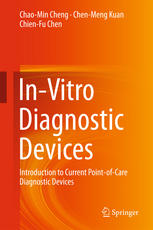

Most ebook files are in PDF format, so you can easily read them using various software such as Foxit Reader or directly on the Google Chrome browser.
Some ebook files are released by publishers in other formats such as .awz, .mobi, .epub, .fb2, etc. You may need to install specific software to read these formats on mobile/PC, such as Calibre.
Please read the tutorial at this link. https://ebooknice.com/page/post?id=faq
We offer FREE conversion to the popular formats you request; however, this may take some time. Therefore, right after payment, please email us, and we will try to provide the service as quickly as possible.
For some exceptional file formats or broken links (if any), please refrain from opening any disputes. Instead, email us first, and we will try to assist within a maximum of 6 hours.
EbookNice Team

Status:
Available0.0
0 reviewsAddressing the origin, current status, and future development of point-of-care diagnostics, and serving to integrate knowledge and tools from Analytical Chemistry, Bioengineering, Biomaterials, and Nanotechnology, this book focusses on addressing the collective and combined needs of industry and academia (including medical schools) to effectively conduct interdisciplinary research.
In addition to summarizing and detailing developed diagnostic devices, this book will attempt to point out the possible future trends of development for point-of-care diagnostics using both scientifically based research and practical engineering needs with the aim to help novices comprehensively understand the development of point-of-care diagnostics. This includes demonstrating several common but critical principles and mechanisms used in point-of-care diagnostics that address practical needs (e.g., disease or healthcare monitoring) using two well-developed examples so far: 1) blood glucose meters (via electrochemistry); and, 2) pregnancy tests (via lateral flow assay).
Readers of this book will come to fully comprehend how to develop point-of-care diagnostics devices, and will be inspired to contribute to a critical global cause – the development of inexpensive, effective, and portable in vitro diagnostics tools (for any purpose) that can be used either at home or in resource limited areas.